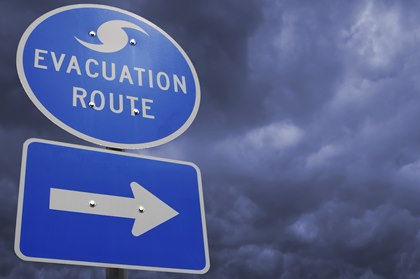The thing about hurricanes is that everyone is affected and everyone must be prepared, even the youngest residents. Children will eventually have to learn about hurricanes and hurricane protection, especially if they live in areas where the chance of hurricanes is moderate to high. Although they may already have firsthand experience with hurricanes, there will come a time when they have to be more proactive in helping the family handle a calamity. Here is a simple Hurricane Guide for Kids safety manual that you can use when training them.
Short Introduction to Hurricanes
There are 5 categories of hurricanes that provide a guide on how strong it is. When the weather bureau calls it a hurricane 5, this means it will be very strong and catastrophic damage is possible. The wind speeds will reach 155 miles per hour or more. Also, the wind will spin counter-clockwise around the eye (center) of the hurricane before the wind abatement happens. But even a category 1 hurricane can force damage and cause havoc.
Hurricane season starts in June and ends in November and each hurricane is named after a person in alphabetical order, refreshing each year. This is to help you remember the name and keep track of the number of the hurricanes thus far to hit the country. If by chance there are more than 26 hurricanes in one year (number of letters in the alphabet), the cycle repeats and starts with the letter A once more.
Quick Tips to Remember
Although you see people taping windows and glass, it does not prevent them from breaking. The best way to preserve glass fixtures like windows and doors is to get the fabric shutters. These are both effective and a great way to have an older son or daughter get involved in hurricane protection, because any teenager should be able to set up the shutters within an hour after hearing the hurricane announcement. Parents can also replace their glass windows and doors with impact glass, which is hurricane safety glass. Impact glass also reinforces the structure of the house because it requires a strong foundation.
Families should always decide on a meeting place inland in case a hurricane suddenly picks up speed and the family is not together. There should also be assignments on who brings water and canned goods to the meeting place. Other things you might want to have around are flashlights, blankets, mobile phones with extra battery, fully charged or power bank, rope, and a first aid kit.
Each person should have a small whistle with him or her at all times whether it is hurricane season or not. It can be a small key chain type of whistle that all family members have so they can recognize the sound and tone. Along with the whistle, every family member should have emergency numbers on their mobile phone and in their wallets.
Finally, pick a reliable radio station that can be used to send messages to each other in case you are apart during the hurricane. Hurricane safety is priority so stay home or go to that meeting place; but make sure you let someone know your plans. Discussing this all in advance can help keep your family safe, and also give your children a sense of preparedness and calm in the face of an oncoming hurricane.
Our team of experienced weather protection specialists will evaluate measurements and provide you an estimate. Simply fill out the request form to get started!




